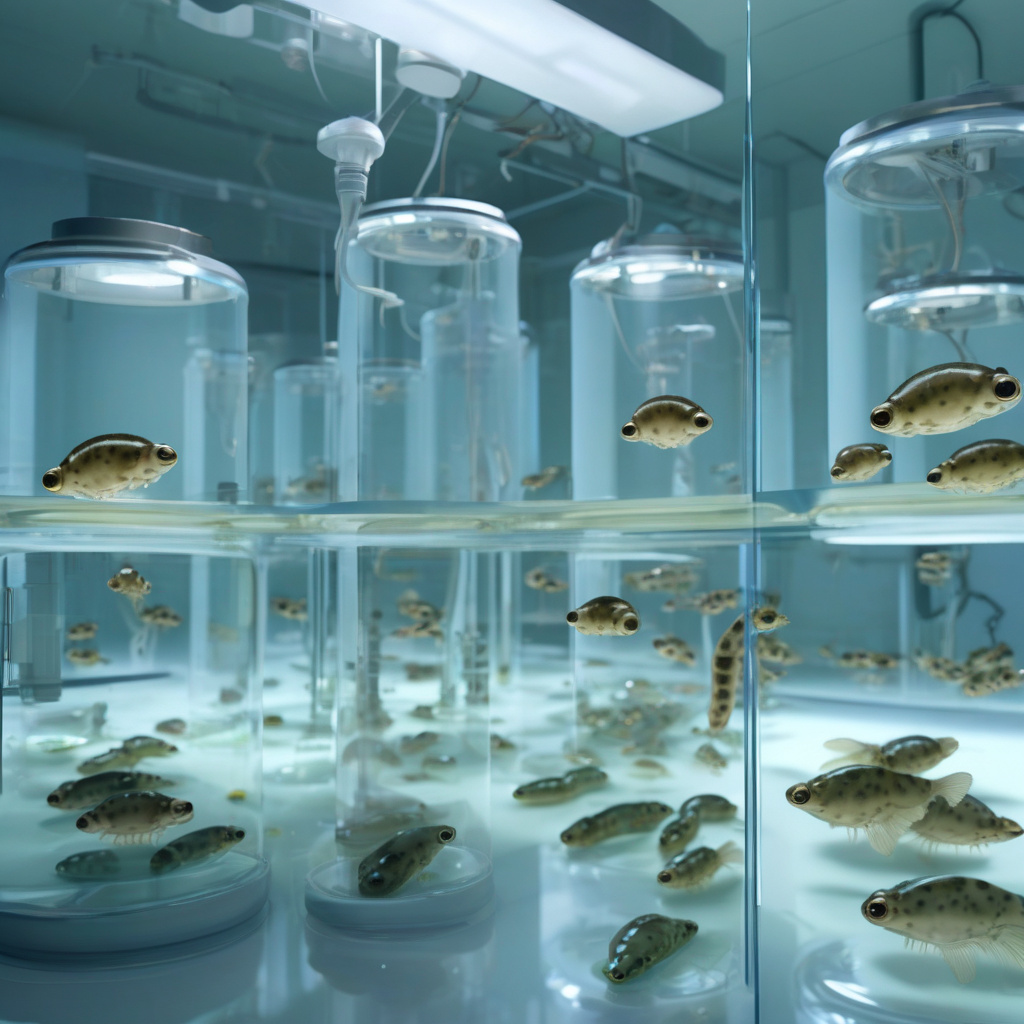Tofu-Like Neural Implant Tracks Brain Development in Live Cyborg Tadpoles
Bioengineering scientists in the US have developed a soft, thin, and stretchable bioelectronic implant, which has the texture and consistency of tofu, to track brain development in live cyborg tadpoles. This innovative technology represents a significant leap forward in understanding neural processes in living organisms and opens up a world of possibilities for both scientific research and medical applications.
The neural implant, inspired by the structure and flexibility of tofu, is designed to mimic the mechanical properties of the brain tissue, allowing for seamless integration with the tadpole’s neural circuitry. By monitoring the electrical activity and changes in the brain over time, researchers can gain valuable insights into how neural networks develop and function in real-time.
One of the key advantages of this tofu-like neural implant is its biocompatibility, meaning that it can safely interact with the biological systems without causing any harm or rejection. This feature is crucial for long-term monitoring of brain activity in living organisms, as it minimizes the risk of inflammation or other adverse reactions.
In addition to its biocompatibility, the soft and stretchable nature of the implant enables it to conform to the irregular shapes and movements of the tadpole’s brain, providing continuous and accurate monitoring without causing any discomfort or interference. This flexibility is essential for studying dynamic processes such as brain development, plasticity, and learning in a natural and minimally invasive way.
Moreover, the tofu-like neural implant is equipped with advanced sensors and wireless communication capabilities, allowing researchers to collect and analyze data in real-time. This real-time monitoring provides a wealth of information about the tadpole’s brain activity, enabling scientists to track changes, identify patterns, and make correlations that were previously impossible to observe.
The implications of this groundbreaking technology extend far beyond the realm of basic research. By gaining a deeper understanding of brain development and function in living organisms, scientists can potentially apply this knowledge to develop new treatments for neurological disorders, brain injuries, and cognitive impairments in humans.
For example, the insights gained from studying tadpole brain development using the tofu-like neural implant could lead to the development of innovative therapies for conditions such as epilepsy, Alzheimer’s disease, and traumatic brain injuries. By leveraging the principles of bioelectronic engineering and neural monitoring, researchers may be able to create personalized treatment strategies that target specific neural pathways and restore brain function.
Overall, the development of the tofu-like neural implant represents a significant milestone in the field of bioengineering and neuroscience. This cutting-edge technology not only provides a powerful tool for studying brain development in live organisms but also holds immense promise for advancing our understanding of the brain and developing new therapies for neurological disorders. As we continue to push the boundaries of innovation and exploration in science, the possibilities for improving human health and well-being are truly limitless.
neural implant, brain development, bioengineering, cyborg tadpoles, bioelectronic monitoring












